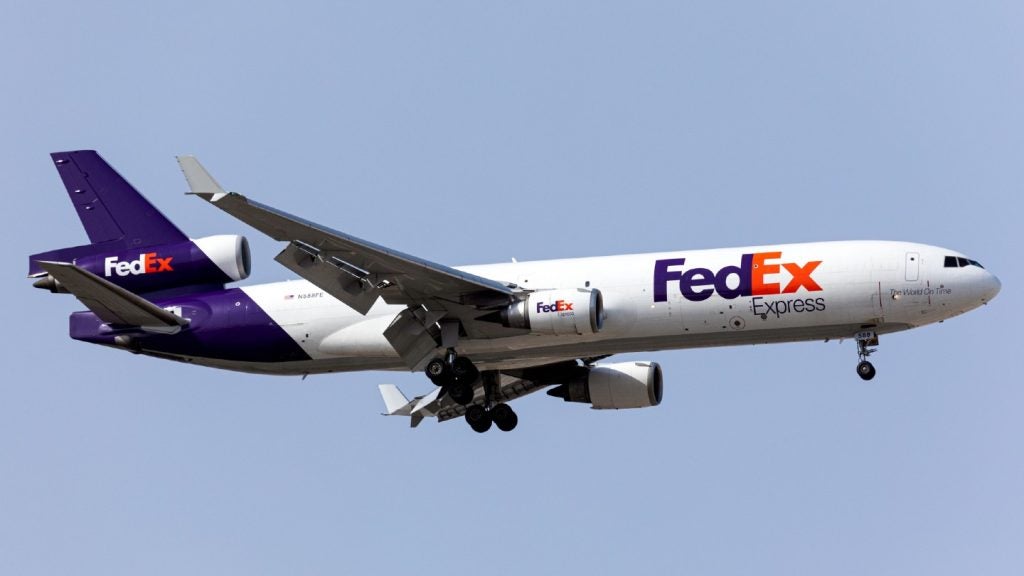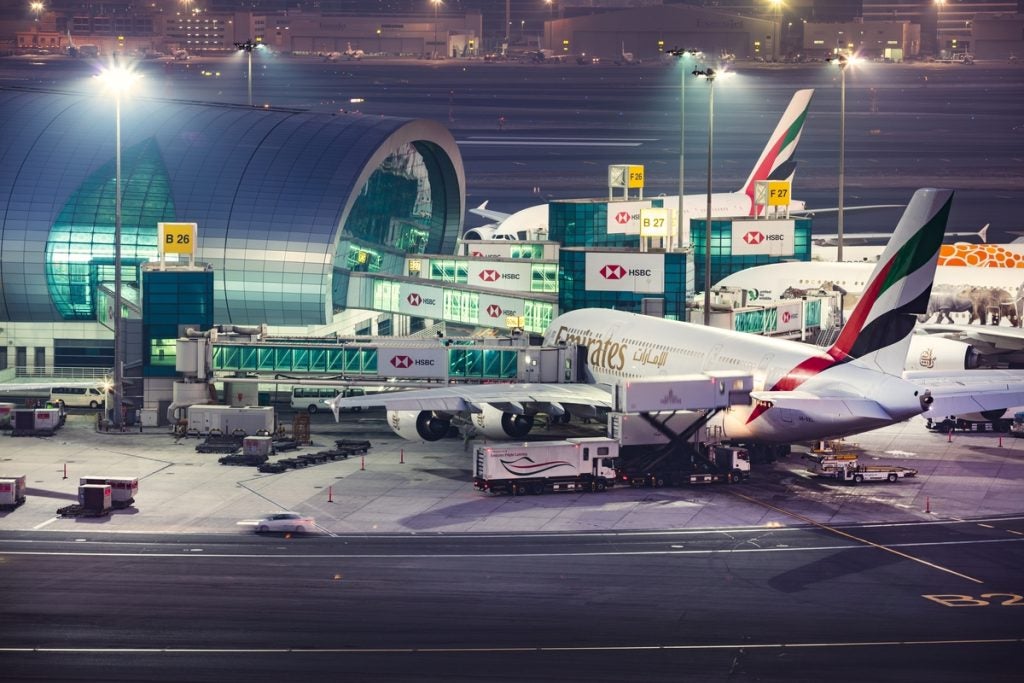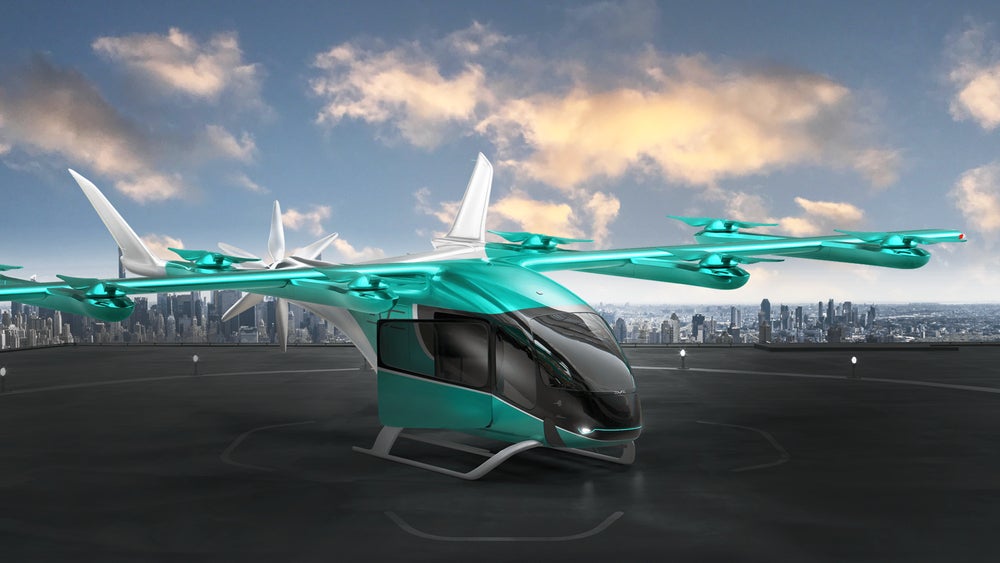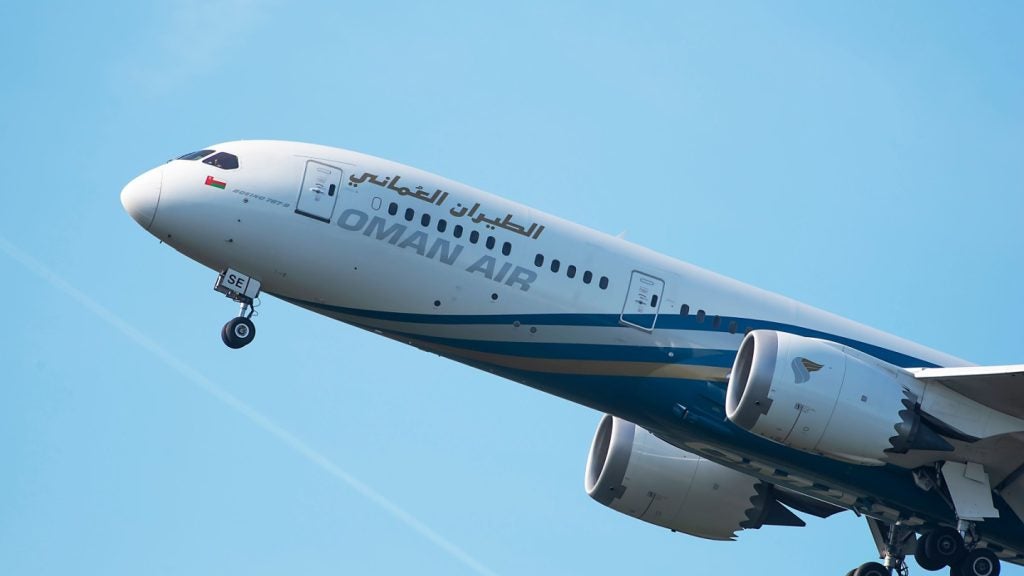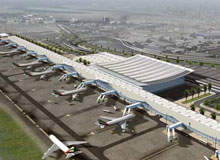
In the first two parts in a series of features highlighting the phenomenal growth of the Middle Eastern aviation sector we explored the respective potential of projects in Abu Dhabi and Saudi Arabia. In many ways such developments were trying to emulate the success of Dubai, which, with its record-breaking skyscrapers, lush hotels and rapidly expanding transport infrastructure, epitomises the towering aspirations of the region.
Of all the airports in the Middle East, Dubai International Airport has led the way in terms of passenger figures and international stature.
Such is the level of aviation growth in the emirate that enough confidence was placed in complimenting the existing airport and its new $4.5bn terminal with another mammoth project – the $33bn Al Maktoum International Airport. In recent months, however, even the fabled Dubai ‘bubble’ has proved susceptible to the global financial downturn. In February, a $10bn bailout plan was announced to deal with mounting debts – shrouding the emirate’s seemingly inevitable bright future in uncertainty.
In our third Middle Eastern airports feature, we examine both the story behind the success of Dubai International Airport and the challenges now facing the new Al Maktoum International Airport, which is due to begin initial operations next year.
Dubai enters the top ten
See Also:
With 2008 marking the successful, albeit rescheduled, opening of Terminal 3 and January 2009 witnessing a 6% increase in passenger figures, Dubai International Airport appears to be remaining in a position of strength.
How well do you really know your competitors?
Access the most comprehensive Company Profiles on the market, powered by GlobalData. Save hours of research. Gain competitive edge.

Thank you!
Your download email will arrive shortly
Not ready to buy yet? Download a free sample
We are confident about the unique quality of our Company Profiles. However, we want you to make the most beneficial decision for your business, so we offer a free sample that you can download by submitting the below form
By GlobalDataDubai Airports Company (DAC), which was founded to oversee operations at both Dubai International Airport and Al Maktoum Airport, believes its experiences in the past will help overcome any current uncertainty. Its vice president of communications Anita Mehra says: “We do have an economic crisis but Dubai has been through many crises and has always managed to change through a resilience and positive energy that things will pick up again. The Emirate is a hub for aviation and is also an important destination for tourism, leisure, conferences, business, trade and export.”
For a city that only introduced electricity in 1952, Dubai’s rise has been rapid. The progress of Dubai International Airport is highlighted in its remarkable entrance in to the international top ten airports list (in terms of international passenger figures) in 2007, having only been positioned 28th in 1997.
It is no surprise Dubai’s airport has grown rapidly. The airport’s aim of becoming a gateway between Europe and the Far East while serving the tourist and business demands of Dubai has always been supported fiercely by local authorities through extraordinary investment and rapid expansion policies.
In April 2007, control of Dubai International Airport and the forthcoming Al Maktoum International Airport separated from the government and the new company DAC was established.
This change in structure is a clear indication of the transitional phase Dubai’s aviation sector is currently undergoing as it looks to balance the development of the existing airport with the opening of another in Dubai’s Jebel Ali area. “We are now under Dubai Airports Company and have created a very strong commercial brand that clearly shows the wider international scene about our business strategy,” Mehra says. “We have a number of brands, which includes Dubai World Central [the huge, multi-phase urban land development in proximity to Al Maktoum International Airport] and then a number of sub brands such as Executive Flight Centre [for VIP passenger services] and the Dubai Flower Centre [a cargo facility that caters for flowers and perishables].”
Terminal velocity – Dubai’s record-breaking third terminal
The introduction of Terminal 3 at the end of last year has certainly added a new dimension to Dubai Airport. With an annual capacity of 43 million passengers, the new terminal, which is exclusively for Emirates Airlines, is the world’s largest building in terms of floor space, stretching over 1,500,000m².
Ironically, it is also specifically designed to reduce walking distances for passengers. “When you arrive at T3 you can see we have put the terminal itself just 10m away from under the apron so you don’t have to walk around it like you do in Terminal 1,” Mehra says. “The building has state-of-the-art design and architecture, so it is visually appealing. and at the same time increases efficiency.”
Taking what is now perceived as an industry lesson in how not to open a new terminal from last year’s much publicised failings at Heathrow’s T5, the $4.5bn building was opened in cautious phases. From 14 October 2008, flights to Africa and other GCC countries became operational before other region’s flights were introduced to the terminal, which was fully operational by 2 December that year.
“We were supposed to open up Terminal 3 in May 2008 but it wasn’t possible. We didn’t want to deliver an unfinished product, especially when the summer season is probably our busiest.
“As a result, last summer turned out to be one of the most efficient we ever had,” Mehra says.
Doubling the amount of retail space at Dubai Airport, Terminal 3 also plays host to 180 check-in counters – confirming its strong passenger focus.
“A lot of the design is aimed at customer satisfaction – from the first footstep into the terminal to boarding the aircraft,” Mehra says. “Technology and a high level of customer service have been combined in order to relax the passenger before flying.”
Widely considered by industry experts as one of the defining mega terminal projects of 2008, DAC will now turns its attention to expanding Terminal 2 (due for completion in 2010) as well as developing the third concourse, which will handle the Airbus A380s, and pursuing plans for a fourth terminal.
Dubai and future airport demand
Meanwhile, DAC also has to prove the need for a new passenger and cargo hub that will be ten times larger than Dubai Airport and Dubai Cargo Village combined.
Many questioned whether demand could match the scale of Al Maktoum International Airport when the project was initially announced in 1997. Now, with a volatile global financial climate negating future passenger traffic forecasts, doubters were quick to read much into recent delays to the project.
“Headlines in the papers about the delays that blame licence problems or not having enough money for infrastructure are not true,” Mehra says “We want to open up Al Maktoum Airport the same way we did Terminal 3 and the increased the capacity of the terminals at Dubai International Airport allows us more time.”
Originally scheduled to open midway through this year, the first passenger terminal at the $33bn airport is now expected to open mid 2010. The site is initially expected to primarily serve cargo, low-cost airlines and charter operations – the last being a service currently unavailable at the more congested Dubai International Airport. However, with construction of the control tower and runway complete, there is still currently no confirmation of which airlines will operate at the new location.
“To begin with, capacity will stay where it is for a number of years. We don’t know which airlines are going there – just that they will be low-cost, charter and cargo operations,” Mehra says.
For an airport billed as becoming the largest in the world, this seems a suspiciously vague introduction. While Dubai International Airport looks set to continue its push up the international airport league tables, it remains to be seen how DAC will support the impending arrival of Al Maktoum International Airport during a period when many other airports and airlines around the world will be adjusting for falling passenger figures.
Quotes in this article were taken from MEED Airport Projects 2009 conference.



